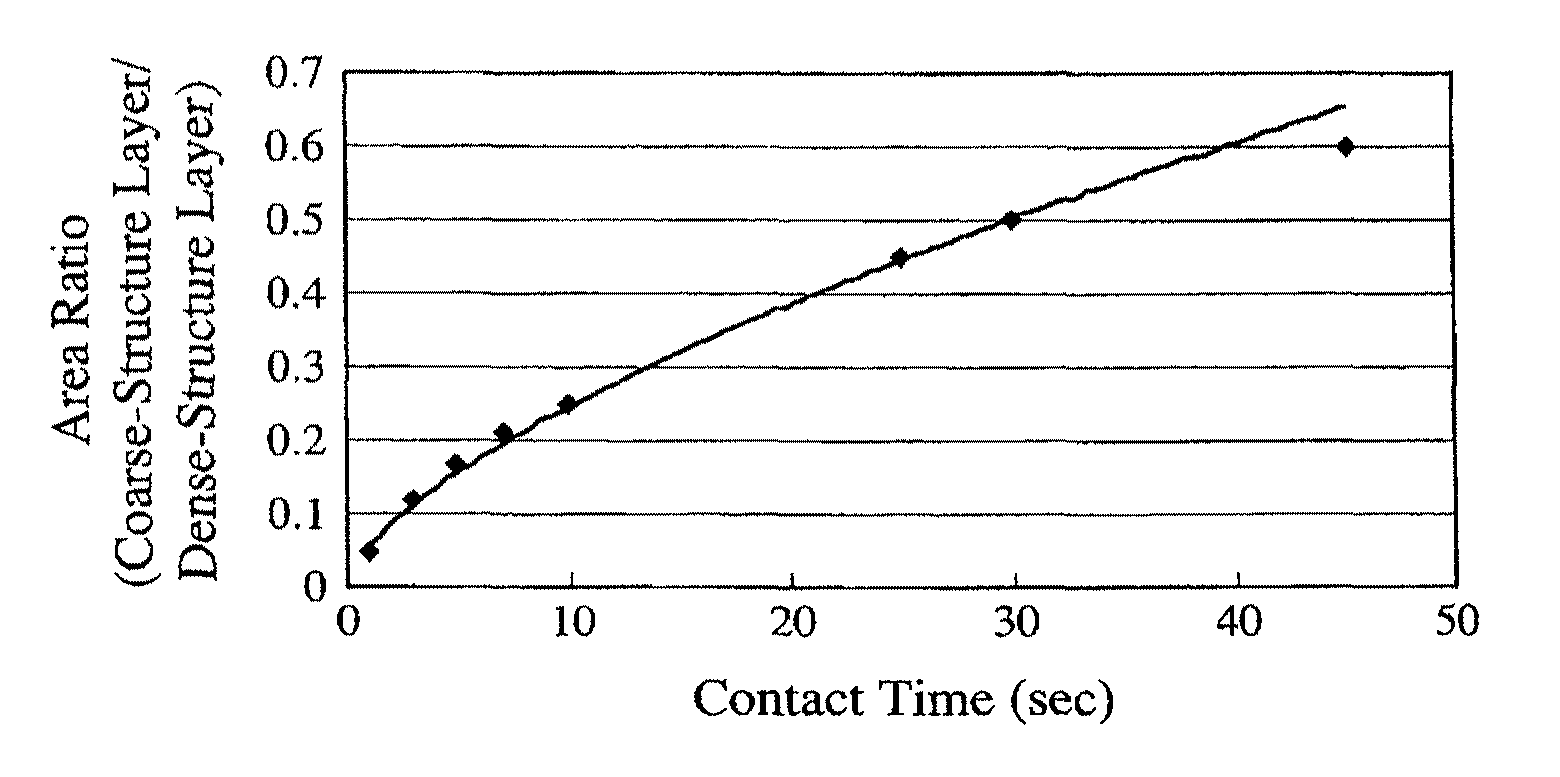Microporous polyethylene membrane, its production method, and battery separator
a technology of microporous polyethylene and polyethylene membrane, which is applied in the direction of membranes, cell components, cell component details, etc., can solve the problems of insufficient strength of microporous polyethylene membrane, low battery voltage, and affecting the characteristics of performance, etc., to achieve excellent electrolytic solution absorption, small air permeability change, and large
- Summary
- Abstract
- Description
- Claims
- Application Information
AI Technical Summary
Benefits of technology
Problems solved by technology
Method used
Image
Examples
example 1
[0131]Dry-blended were 100 parts by mass of a polyethylene composition comprising 18% by mass of ultra-high-molecular-weight polyethylene (UHMWPE) having a mass-average molecular weight (Mw) of 2.0×106 and Mw / Mn of 8, and 82% by mass of high-density polyethylene (HDPE) having Mw of 3.0×105 and Mw / Mn of 8.6, with 0.375 parts by mass of tetrakis[methylene-3-(3,5-ditertiary-butyl-4-hydroxyphenyl)-propionate]methane as an antioxidant. Measurement revealed that the polyethylene composition comprising UHMWPE and HDPE had Mw of 6.0×105, Mw / Mn of 13.5, a melting point of 135° C., and a crystal dispersion temperature of 100° C.
[0132]The Mws and Mw / Mn ratios of the UHMWPE, the HDPE and the polyethylene composition were measured by gel permeation chromatography (GPC) under the following conditions.[0133]Measurement apparatus: GPC-150C available from Waters Corporation,[0134]Column: Shodex UT806M available from Showa Denko K.K.,[0135]Column temperature: 135° C.,[0136]Solvent (mobile phase): o-d...
example 2
[0143]A microporous polyethylene membrane was produced in the same manner as in Example 1 except for using as a heat roll, an electrocast, porous steel sleeve having circular penetrating holes of 0.05 mm in diameter.
example 3
[0144]A microporous polyethylene membrane was produced in the same manner as in Example 1, except that a rough-surface roll constituted by a round wire with 0.2-mm gaps was used as a heat roll, and that the heat-setting temperature was 129° C.
PUM
| Property | Measurement | Unit |
|---|---|---|
| molecular weight distribution | aaaaa | aaaaa |
| molecular weight distribution | aaaaa | aaaaa |
| pore size | aaaaa | aaaaa |
Abstract
Description
Claims
Application Information
 Login to View More
Login to View More - R&D
- Intellectual Property
- Life Sciences
- Materials
- Tech Scout
- Unparalleled Data Quality
- Higher Quality Content
- 60% Fewer Hallucinations
Browse by: Latest US Patents, China's latest patents, Technical Efficacy Thesaurus, Application Domain, Technology Topic, Popular Technical Reports.
© 2025 PatSnap. All rights reserved.Legal|Privacy policy|Modern Slavery Act Transparency Statement|Sitemap|About US| Contact US: help@patsnap.com


